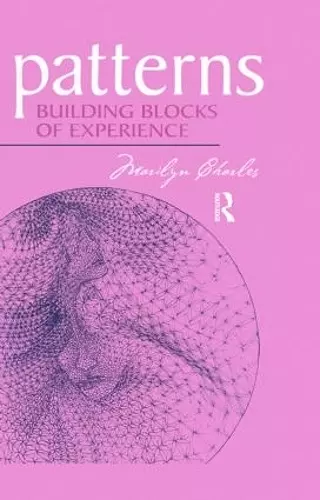Patterns
Building Blocks of Experience
Format:Hardback
Publisher:Taylor & Francis Ltd
Published:1st Dec '02
Currently unavailable, and unfortunately no date known when it will be back
This hardback is available in another edition too:
- Paperback£54.99(9781138005716)

In recent years, various tributaries of psychoanalytic and developmental theory have flowed into our dawning understanding of the role of early sensory and affective experiences in the construction of our personal worlds. In Patterns: Building Blocks of Experience, Marilyn Charles shows how such primary experiences coalesce into patterns, those essential units of meaning that capture the unique subjectivity of each individual. Frequently "known" by their prosody or affective melody, patterns come to have profound meanings that we utilize in constructing basic notions of self and other. Through pattern, Charles holds, we approach elusive meanings through dimensions of shape, contour, and affective resonance. Such patterned understandings, in turn, become a mode of interchange through which we touch one another in ways that go beyond the overtly physical.
Analytic patients, Charles finds, have often led early lives too full of "noise" to use their early sensory and affective experiences constructively. Such patients tend to live out patterns that operate unconsciously and have become literally incomprehensible. Analytic communication, by drawing explicit attention to such patterned experience, provides new images that intrude on ingrained patterns of thinking about the self and other. Out of the productive clash of analytically co-constructed images and the invariant patterns of the past emerge new conceptions of what the patient may choose to be in the present moment.
Through it all, Charles displays an admirable willingness to sit in difficult spaces and to work through troubling therapeutic impasses from the inside out, rather than from some point of ostensible safety. This finely textured and richly evocative study, which grows out of Charles' extensive clinical work with artists, writers, and musicians, is a signal contribution to developmental theory, clinical theory, and the psychology of creativity.
"Reading Charles's book is like being invited to make meaning on evermore complex levels. The chapters are like movements in a symphony, building on each other, helping readers to make meaning of theorists like Matte-Blanco, Bion, and Milner through rich clinical examples."
- Susan E. Damattos, Ph.D.
"To all those brow-knitted surveyors of Bion and object relations theoritsts (and we are many) comes Marilyn Charles to clarify, interpret, elaborate, and apply in new ways the value of their contributions. In her characteristically gracious prose, Charles elucidates the essential patterns of psychic development, how these patterns become distorted and disrupted, and how therapy can be restorative. It is no surprise, given the value Charles places on pre- and non-verbal patterns, the she reaches to comprehend the female body - and, similarly, given the value she places on language and prosody, that she does so through analyses of the work of female poets, notably Adrienne Rich and Sylvia Plath. Yet, always the clinician, she remains clear-eyed about work with patients and helps us think about what we do in new and surprising ways."
- Douglas H. Ingram, Editor, JAAP
"Scintillating, breathtaking, awesome - such are the words that come to mind in characterizing Marilyn Charles's writing as one is scorched by domains of psychic reality that her words ignite. Patterns is a paean to creativity from the depths linked to loving appreciation of sensory reality."
- Michael Eigen, Author, Damaged Bodies
“Charles . . . seeks to explore this prelexical period and unravel its epistemological and communicative mysteries. She brings special tools to this task. Not only is she a practicing psychoanalyst; she is also a gifted poet and artist and brings all three talents to bear in order to shed light on how the infant organizes and communicates his or her experiences. . . . This is not a work on esthetics so much as it is an esthetic work on psychoanalysis, one that adds dimension, clarity, and richness to it.”
- James S. Grotstein, Ph.D., Author, Who is the Dreamer, Who Dreams the Dream? (Analytic Press, 2000)
ISBN: 9780881633726
Dimensions: unknown
Weight: 1000g
204 pages